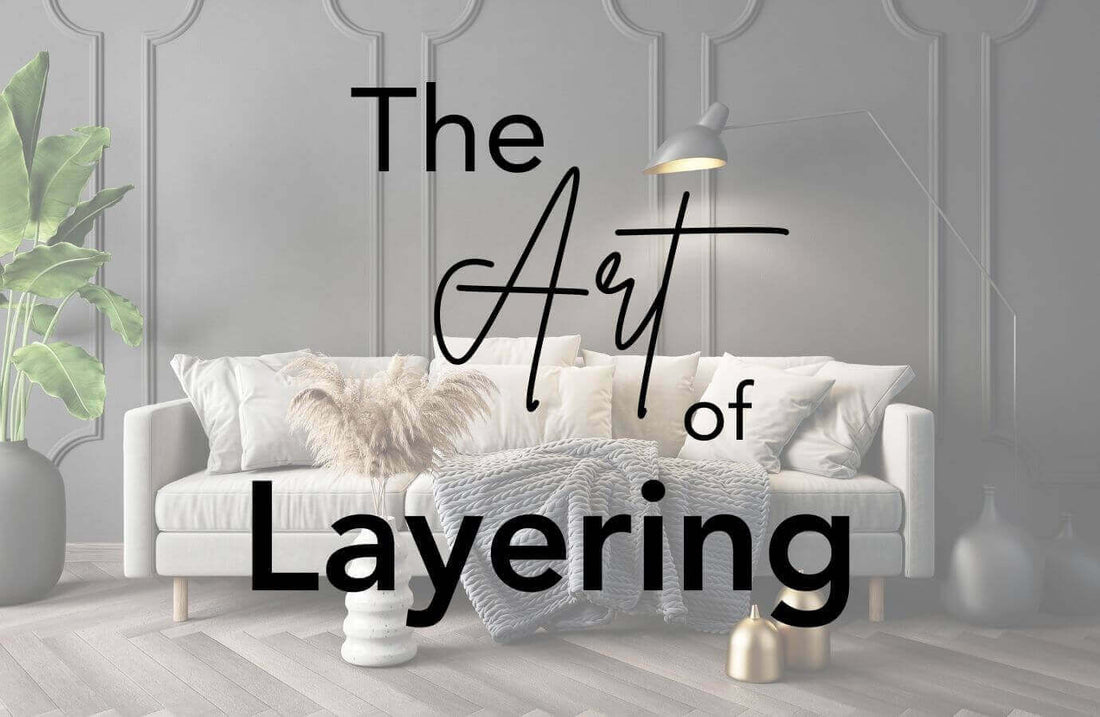
How to Layer Fabrics, Textures, and Patterns in Home Design for a Cohesive and Stylish Look
Layering fabrics, textures, and patterns is a fundamental element in creating a visually appealing and comfortable home. It adds depth, personality, and a sense of warmth that goes beyond simply choosing a single color or fabric. This guide will walk you through the process, offering tips and tricks to help you master this design technique.
Understanding the Basics of Layering
Before diving into specific examples, let's establish some core principles:
- Start with a foundation: This is your base layer, usually a solid-colored item like a rug, wall paint, or large piece of furniture. It sets the overall tone and color palette.
- Introduce texture: Next, add texture through items like throw blankets, cushions, or area rugs with different weaves. Think chunky knits, smooth silks, or plush velvets.
- Add pattern: Introduce patterns gradually. Start with a subtle pattern on a smaller item, then incorporate bolder patterns on larger items as needed. Avoid overwhelming the space with too many competing patterns.
- Consider scale: The size of your patterns matters. Balance large-scale patterns with smaller ones to prevent visual chaos.
- Play with color: Use color to create harmony or contrast. A cohesive color palette will create a unified look, while contrasting colors can add visual interest.

Choosing Your Fabrics
The fabrics you select significantly impact the overall feel of your space. Consider these factors:
- Natural vs. Synthetic: Natural fibers like linen, cotton, and wool offer a more organic texture and often better breathability. Synthetics provide durability and affordability.
- Weight and Drape: Heavier fabrics like velvet or tapestry can create a luxurious feel, while lighter fabrics like linen or silk offer a more airy, breezy atmosphere.
- Durability: Choose durable fabrics for high-traffic areas, such as durable upholstery fabrics for sofas and chairs.
Mastering Pattern Mixing
Mixing patterns successfully requires a thoughtful approach. Here's how to do it:
- Start with a common thread: Choose patterns that share a common color, shape, or motif. This creates a sense of unity.
- Vary the scale: Mix large-scale patterns with smaller ones to prevent the look from becoming overwhelming.
- Contrast textures: Pairing different textures (e.g., a striped linen cushion with a floral velvet throw) adds visual interest.
- Use the rule of three: Combine three different patterns—one dominant, one secondary, and one accent—for a balanced look.
- Don't be afraid to experiment: Try different combinations to see what works best in your space.

Layering Textures for Depth
Texture adds depth and visual interest to any room. Consider these ideas:
- Layer rugs: Place a smaller rug on top of a larger rug to add visual interest and define different areas within a room.
- Incorporate throws and pillows: Throws and pillows in varying textures add warmth and comfort while adding visual richness.
- Use textured wall coverings: Wall coverings with woven textures or unique finishes add instant character.
Examples of Successful Layering
Here are a few examples to inspire you:
- A living room with a neutral-toned sofa: Layer a chunky knit throw blanket, a patterned cushion with a geometric design, and a solid-colored velvet cushion for a balanced and sophisticated look.
- A bedroom with a patterned duvet cover: Layer a textured throw blanket and solid-colored pillows for visual interest and comfort.
- A dining room with a solid-colored tablecloth: Add placemats with a subtle pattern and napkins with a bold pattern for a visually stimulating yet harmonious setting.

Conclusion
Mastering the art of layering fabrics, textures, and patterns elevates your home decor from simple to sophisticated. By following these tips and experimenting with different combinations, you can create a space that is not only beautiful but also reflects your personal style and creates a warm, inviting atmosphere.























